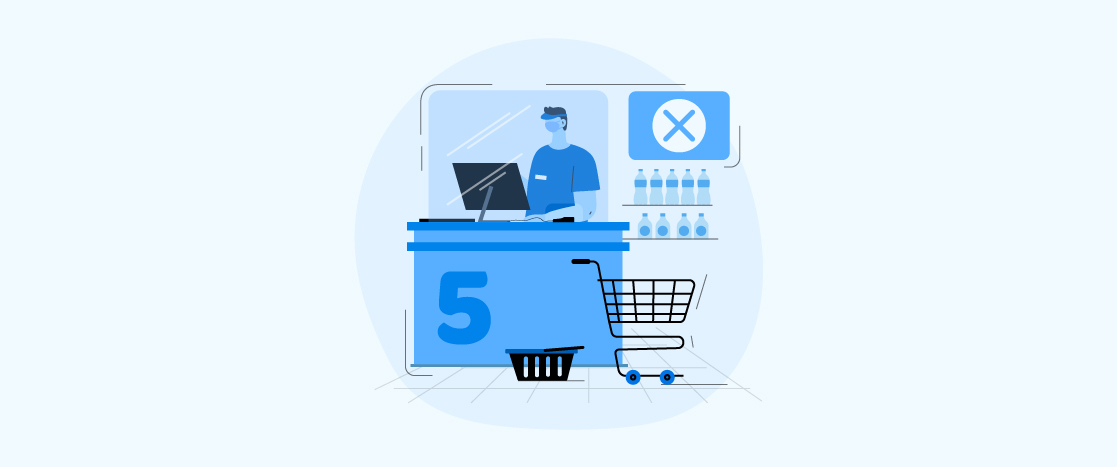
Cart Abandonment Reduction Strategies and Tools: A Comprehensive Guide
Cart abandonment is pervasive in the ecommerce industry, where customers add items to their online shopping carts but still need to complete the purchase. This phenomenon has significant implications for online retailers, resulting in lost sales and revenue. In this article, we will delve into cart abandonment, exploring its definition, impact, and current rates across various industries.
Defining Cart Abandonment
Cart abandonment occurs when a customer adds items to their online shopping cart but does not complete the purchase within a specified timeframe, usually 30 minutes to an hour. This can happen due to various reasons, including technical issues, pricing concerns, or simply a change of heart.
Cart abandonment has a substantial impact on e-commerce businesses, resulting in lost sales and revenue. According to a study, the average cart abandonment rate is around 69.57%, which translates to a significant loss of potential revenue. Moreover, cart abandonment can also lead to a decrease in customer loyalty and retention, as customers may become frustrated with the shopping experience and choose to shop elsewhere.
Current Cart Abandonment Rates Across Industries
Cart abandonment rates vary across different industries, with some sectors experiencing higher rates than others. For instance, the fashion industry has a cart abandonment rate of around 74.4%, while the travel industry has a rate of around 81.1%. Understanding these rates can help businesses identify areas for improvement and develop targeted strategies to reduce cart abandonment.
Understanding the Causes of Cart Abandonment
To develop effective strategies for reducing cart abandonment, it is essential to understand the underlying causes. In this section, we will explore the common reasons for abandoning shopping carts, psychological factors influencing abandonment, and technical issues leading to cart abandonment.
Common Reasons for Abandoning Shopping Carts
Shopping cart abandonment is a prevalent issue for online retailers, with several factors contributing to this trend. High shipping costs and unexpected fees are significant deterrents, complex checkout processes also frustrate customers, causing them to reconsider their purchases. Additionally, concerns about website trustworthiness and payment security can erode confidence and lead to cart abandonment.
Technical issues, such as slow loading times or website crashes, can also disrupt the shopping experience. By addressing these pain points, retailers can streamline their checkout processes, build trust with customers, and reduce cart abandonment rates.
Psychological Factors Influencing Abandonment
Psychological factors significantly contribute to cart abandonment. Key influences include:
- Fear of online transactions, driven by security concerns
- Lack of confidence in the website or brand, eroding trust
- Fear of Missing Out (FOMO) on better deals, prompting hesitation
- Analysis paralysis, resulting from overwhelming product choices
These psychological barriers hinder purchasing decisions. Retailers can mitigate abandonment by fostering trust through clear security measures, robust product information, and user-friendly interfaces. Offering price matching, scarcity messaging, or streamlined product recommendations can also alleviate FOMO and analysis paralysis, guiding customers toward confident purchasing decisions.
Technical Issues Leading to Cart Abandonment
Technical issues can cause shoppers to abandon their carts. Slow-loading websites or ones that crash can be frustrating. Difficult navigation and complicated checkout processes also lead to abandonment. Additionally, shoppers worry if payment options seem unsafe or lack trust badges. Incompatibility with certain browsers or devices can also cause issues.
Fixing these problems helps shoppers trust and stay on your website to complete their purchases, ensuring a smooth and hassle-free shopping experience.
Analyzing Cart Abandonment Data
To develop effective strategies for reducing cart abandonment, it is essential to analyze cart abandonment data. In this section, we will explore the key metrics to track, tools for collecting and analyzing abandonment data and interpreting cart abandonment analytics.
Key Metrics to Track
To tackle cart abandonment, track these essential metrics. Start with the cart abandonment rate to measure lost sales. Average Order Value (AOV) shows potential revenue. The conversion rate highlights successful purchases. Bounce rate identifies immediate drop-offs. Time spent on the website reveals navigation issues. Monitoring these metrics uncovers shopper behavior patterns. By addressing abandonment, you can boost sales, enhance customer satisfaction, and grow your business.
Tools for Collecting and Analyzing Abandonment Data
To gain insights into cart abandonment, utilize specialized tools. Google Analytics provides valuable data on shopper behavior. Cart abandonment software, like CartStack or Abandoned Cart Pro, helps track and recover lost sales. Heatmap and session recording tools, such as Hotjar or Crazy Egg, reveal how shoppers interact with your website.
These tools identify patterns, pinpoint issues, and inform data-driven decisions to optimize checkout processes, improve user experience, and reduce abandonment rates.
Interpreting Cart Abandonment Analytics
To make the most of cart abandonment analytics, consider the following steps. Start by identifying patterns and trends in the data to pinpoint when and why shoppers abandon carts. Analyze the checkout process to uncover frustrating steps or roadblocks. By understanding the data and testing solutions, you can streamline checkout, reduce abandonment rates, and increase conversions.
This data-driven approach helps create a seamless shopping experience that keeps customers coming back.
Strategies to Reduce Cart Abandonment
In this section, we will explore several strategies for reducing cart abandonment, including optimizing the checkout process, addressing pricing and cost concerns, building trust and security, improving website performance and user experience, expanding payment options, implementing exit-intent strategies, and personalizing the shopping experience.
Optimizing the Checkout Process
Streamlining the checkout process is key to reducing cart abandonment. Make it easier for shoppers to buy by reducing unnecessary form fields and offering guest checkout options. This speeds up the process and eliminates frustration. Adding trust badges and security seals also reassures shoppers that their information is safe.
A seamless checkout experience boosts conversions, builds trust, and encourages customers to complete their purchases. By simplifying checkout, you can significantly reduce abandonment rates and increase sales.
Addressing Pricing and Cost Concerns
Addressing pricing and cost concerns is also essential for reducing cart abandonment. Some strategies for addressing pricing and cost concerns include offering transparent pricing and shipping costs, providing price matching or price beating guarantees, and offering free shipping or free returns.
Building Trust and Security
Building trust and security is critical for reducing cart abandonment. Some strategies for building trust and security include using trust badges and security seals, providing clear product information and product reviews, and offering secure payment gateways.
Improving Website Performance and User Experience
Improving website performance and user experience is also essential for reducing cart abandonment. Some strategies for improving website performance and user experience include optimizing website loading times, improving website navigation and usability, and using responsive design.
Expanding Payment Options
Expanding payment options is also critical for reducing cart abandonment. Some strategies for expanding payment options include offering multiple payment gateways, accepting alternative payment methods, such as PayPal or Apple Pay, and providing clear payment information.
Implementing Exit-Intent Strategies
Implementing exit-intent strategies is also essential for reducing cart abandonment. Some strategies for implementing exit-intent strategies include using exit-intent pop-ups or overlays, offering incentives or discounts for completing the purchase, and using clear and concise messaging.
Personalizing the Shopping Experience
Personalizing the shopping experience is also critical for reducing cart abandonment. Some strategies for personalizing the shopping experience include using customer data and behavior to personalize product recommendations, offering personalized promotions and discounts, and using clear and concise messaging.
Abandoned Cart Recovery Tactics
In this section, we will explore several abandoned cart recovery tactics, including email marketing strategies for cart recovery, retargeting campaigns, and push notifications and SMS recovery.
Email Marketing Strategies for Cart Recovery
Email marketing is a powerful tool for recovering abandoned carts. Send personalized and timely reminders to shoppers, reminding them of their unfinished purchases. Offer incentives or discounts to encourage completion. Use clear and concise subject lines and email copy to grab attention. These targeted emails re-engage customers, overcome buying hesitation, and drive sales. By sending well-crafted cart recovery emails, you can rescue lost revenue, boost conversions, and strengthen customer relationships. Make every email count and bring shoppers back to complete their purchase.
Retargeting Campaigns
Retargeting campaigns help recover abandoned carts by targeting shoppers who left without buying. Use targeted ads on social media and Google Ads to reach them. Personalized promotions and discounts entice shoppers to return and complete their purchase. Clear and concise ad copy grabs attention and drives action. These campaigns remind shoppers of their interest and overcome buying hesitation. By re-engaging shoppers, retargeting campaigns rescue lost sales and boost conversions, maximizing revenue potential.
Push Notifications and SMS Recovery
Push notifications and SMS recovery are also effective for recovering abandoned carts. Some strategies for push notifications and SMS recovery include sending personalized and timely push notifications or SMS reminders, offering incentives or discounts for completing the purchase and using clear and concise message copy.
Tools and Solutions for Cart Abandonment Reduction
In this section, we will explore several tools and solutions for cart abandonment reduction, including cart abandonment recovery software, email marketing platforms with abandonment features, on-site engagement tools, analytics and tracking solutions, and customer feedback and survey tools.
Cart Abandonment Recovery Software
Cart abandonment recovery software is designed to help businesses recover abandoned carts. Some popular cart abandonment recovery software includes.
- CartStack: It is a cart abandonment recovery software that helps businesses recover lost sales by sending personalized and timely email reminders to customers who have abandoned their carts. It also provides detailed analytics and insights to help businesses optimize their checkout process and improve customer experience.
- Abandoned Cart Pro: Abandoned Cart Pro is a cart abandonment recovery software that uses AI-powered email campaigns to recover abandoned carts and increase conversions. It also offers features such as cart abandonment tracking, email automation, and customizable email templates to help businesses personalize their recovery efforts.
- Rejoiner: It is a cart abandonment recovery software that uses behavioral data and machine learning to identify and target high-value customers who are likely to abandon their carts. It offers features such as personalized email campaigns, cart abandonment tracking, and testing to help businesses optimize their recovery efforts and improve customer retention.
Email Marketing Platforms with Abandonment Features
Email marketing platforms with abandonment features are also effective for recovering abandoned carts. Some popular email marketing platforms with abandonment features includes:
- Mailchimp: It is an email marketing platform that offers cart abandonment features, allowing businesses to create targeted email campaigns to recover lost sales. Its automation features enable businesses to send personalized reminders to customers who have abandoned their carts, increasing the chances of conversion.
- Klaviyo: It is an email marketing platform that specializes in e-commerce marketing, offering advanced cart abandonment features to help businesses recover lost sales. This platform uses machine learning to identify high-value customers and send targeted email campaigns to encourage them to complete their purchases.
- Constant Contact: It is an email marketing platform that offers cart abandonment features, enabling businesses to create automated email campaigns to recover lost sales. This platform provides customizable email templates and advanced analytics to help businesses optimize their recovery efforts and improve customer retention.
On-Site Engagement Tools
On-site engagement tools are designed to engage customers on the website and reduce cart abandonment. Some popular on-site engagement tools include:
- Hotjar: It is an on-site engagement tool that helps businesses understand customer behavior on their website, identifying areas where customers are struggling and abandoning their carts. Its heatmaps, session recordings, and conversion analytics provide insights to optimize the checkout process and reduce cart abandonment.
- Crazy Egg: It is an on-site engagement tool that uses heatmaps and A/B testing to help businesses identify areas of their website where customers are dropping off and abandoning their carts. Its tools enable businesses to create targeted changes to their website to improve the customer experience and reduce cart abandonment.
- OptinMonster: It is an on-site engagement tool that helps businesses convert abandoning customers into subscribers and customers. Its pop-ups, slide-ins, and other on-site messaging tools enable businesses to offer targeted promotions and incentives to customers who are about to abandon their carts, encouraging them to complete their purchases.
Analytics and Tracking Solutions
Analytics and tracking solutions are essential for understanding cart abandonment data and developing effective strategies for reduction. Some popular analytics and tracking solutions includes:
- Google Analytics: It is a web analytics service that provides insights into customer behavior, including cart abandonment rates and revenue lost due to abandonment. Its advanced tracking and reporting capabilities enable businesses to identify trends and patterns in cart abandonment, and develop targeted strategies to reduce it.
- Mixpanel: It is a product analytics tool that helps businesses track customer behavior and identify areas where customers are dropping off and abandoning their carts. Its funnel analysis and retention reports provide insights into the customer journey, enabling businesses to optimize their checkout process and reduce cart abandonment.
Customer Feedback and Survey Tools
Customer feedback and survey tools are designed to collect customer feedback and improve the shopping experience. Some popular customer feedback and survey tools includes:
- SurveyMonkey: It is a customer feedback tool that helps businesses collect feedback from customers who have abandoned their carts, providing insights into the reasons behind abandonment and enabling businesses to identify areas for improvement. Its survey analytics capabilities enable businesses to develop targeted strategies to address customer concerns and reduce cart abandonment.
- Qualtrics: is a customer experience management platform that helps businesses collect and analyze customer feedback, including feedback from customers who have abandoned their carts. Its advanced analytics capabilities enable businesses to identify the root causes of cart abandonment.
- Medallia: is a customer experience management platform that helps businesses collect and analyze customer feedback, including feedback from customers who have abandoned their carts. Its text analytics and sentiment analysis capabilities enable businesses to identify areas for improvement and develop targeted strategies to reduce cart abandonment and improve the overall shopping experience.
Future Trends in Cart Abandonment Reduction
In this section, we will explore several future trends in cart abandonment reduction, including emerging technologies in e-commerce, privacy-first approaches in a cookieless future, and the evolution of customer expectations.
Emerging Technologies in E-commerce
Emerging technologies, such as artificial intelligence (AI) and augmented reality (AR), are transforming the e-commerce industry and providing new opportunities for reducing cart abandonment. Some strategies for leveraging emerging technologies include using AI-powered chatbots to personalize the shopping experience, using AR to enhance product visualization, and using data analytics to inform strategy and optimize performance.
Privacy-First Approaches in a Cookieless Future
The e-commerce industry is moving towards a cookieless future, prioritizing customer data protection. To adapt, businesses must adopt privacy-first approaches. This means relying on first-party data, collected directly from customers. Transparent data collection practices build trust. By prioritizing privacy, e-commerce businesses ensure a secure and trustworthy shopping experience, maintaining customer loyalty and compliance with evolving regulations. This future-proofs businesses in a changing digital landscape.
The Evolution of Customer Expectations
Customers now expect shopping experiences to be personalized, seamless, and secure. To meet these expectations, businesses must stay ahead. Using data analytics informs strategies and optimizes performance. Personalized marketing and promotions show customers you understand their needs. By embracing these innovations, businesses can deliver exceptional service, build loyalty, and stay competitive in a rapidly changing market. This helps drive sales, satisfaction, and long-term growth.
Measuring Success and Continuous Improvement
In this section, we will explore several strategies for measuring success and continuous improvement, including key performance indicators for cart abandonment, A/B testing and optimization, and adapting to changing consumer behaviors.
Key Performance Indicators for Cart Abandonment
Key performance indicators (KPIs) are essential for measuring the success of a cart abandonment strategy. Some KPIs for cart abandonment include cart abandonment rate, conversion rate, average order value (AOV), and customer satisfaction.
A/B Testing and Optimization
A/B testing and optimization are critical for continuous improvement and optimizing cart abandonment strategies. Some strategies for A/B testing and optimization include testing and iterating on different strategies, using data to inform strategy and optimize performance, and using emerging technologies to enhance the shopping experience.
Adapting to Changing Consumer Behaviors
Consumer behaviors are changing rapidly, with customers demanding personalized, seamless, and secure shopping experiences. Some strategies for adapting to changing consumer behaviors include using data analytics to inform strategy and optimize performance, implementing personalized marketing and promotions, and using emerging technologies to enhance the shopping experience.
Conclusion
Cart abandonment is pervasive in the ecommerce industry, resulting in lost sales and revenue. By understanding the causes of cart abandonment, analyzing cart abandonment data, and implementing effective strategies for reduction, businesses can reduce cart abandonment and improve the shopping experience.
In this article, we have explored several strategies for reducing cart abandonment, including optimizing the checkout process, improving website performance and user experience, and personalizing the shopping experience.
We have also explored several tools and solutions for cart abandonment reduction, including cart abandonment recovery software, email marketing platforms with abandonment features. By implementing these strategies and using these tools and solutions, businesses can reduce cart abandonment and improve the shopping experience.





